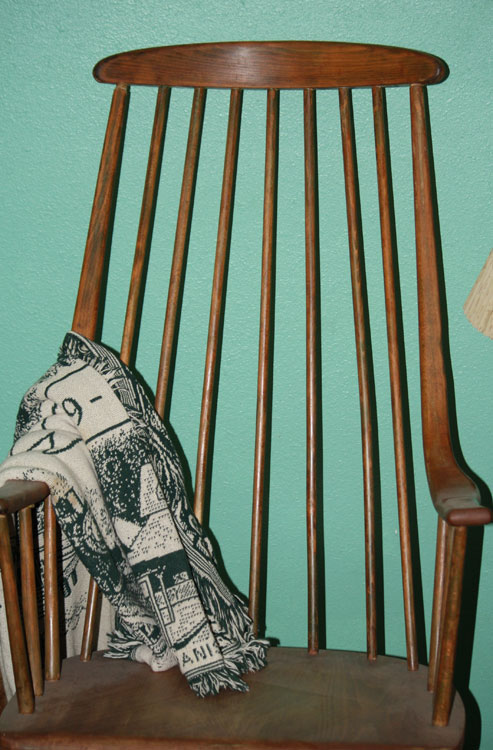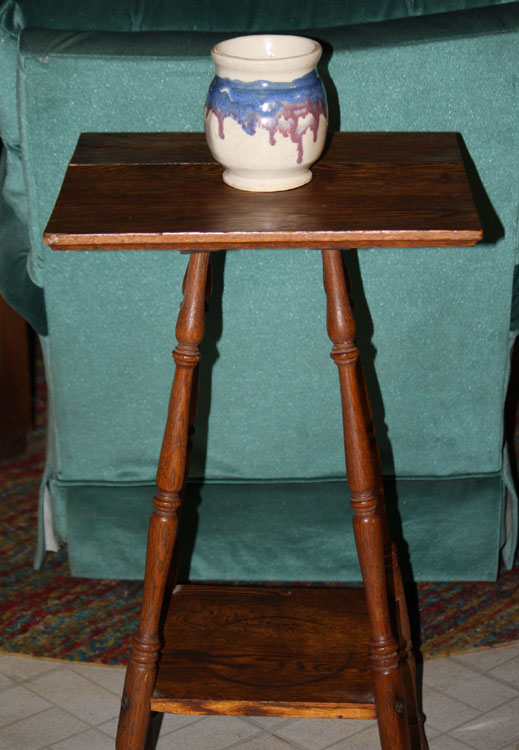Teaching and Learning and Caring Blog
EL PASO – Some people like everything new. They don’t like the idea of wearing clothes, sitting on couches, or driving vehicles that others have used before them. I don’t understand these people. Another group has become so obsessed with the past that they spend their lives looking for particular items from particular countries or centuries or companies deemed to be of value. I don’t understand these people either.

40-cent hand-quilted pillow sham, purchased on Tuesday. (Cheryl Howard/Borderzine.com)
What all of us could probably agree on is that inanimate objects have a history and sometimes that history is imprinted on the object. It can be seen, felt, sensed, or imagined. There is a residual sort of life that some abhor and others revere; I acknowledge and respect the history, and sometimes am awed by it, but at heart, I think my relationship is more utilitarian and economic. I was raised with hand-me-downs, home-mades, and inherited.
One of my first purchases was an oak plant stand at a farm auction that I bought for a quarter when I was about six. I clearly remember going to the dump to scavenge with my father at a time when that was not uncommon and still possible. If something could be used as-is, fixed, repurposed or improved for little or no money, then that was what should be done. Stores were last resort for pressing needs even if there was enough money. My mother was not always a fan of this frugality; I suppose none of the family was if the want was strong enough. Nevertheless, this is a river that ran through the landscape of my youth, and remains with me still. I have a rocking chair I picked up next to a dumpster and spent hours scraping off ugly green paint.

Free rocking chair found by dumpster, application of sweat equity and sand paper required. (Cheryl Howard/Borderzine.com)
If I buy clothes at the thrift store, I know the seams have not ripped out with the first wearings. I know that I will not blow a budget for a momentary whim. I will feel a bit of kinship with an unknown person who found an aesthetic in this item, at least enough to buy it. Sometimes I get a strong feeling about the person who owned something before me and sometimes I hardly think about it. Occasionally, I buy something just to honor the creativity or craftsmanship that went into an item. Yesterday I spent forty cents on a hand quilted pillow sham I didn’t really need.
But, even new items have a history: the company and the country in which they were made, the individual workers on a particular day, the store selling the item. All these may convey information to a potential customer. In addition, there are political positions that some companies or their CEOs have taken that may be offensive to a politically informed consumer, some companies that some of us would rather not support. New items are often made with their own demise on the near horizon, a planned obsolescence that either makes the item more affordable for more consumers or takes into account rapidly changing technologies… or just a quick profit.

25-cent oak plant stand, purchased in the 1950s. (Cheryl Howard/Borderzine.com)
Nowadays, it is fashionably green in some circles to engage in activities that reuse and repurpose old items; it is no longer the exclusive domain of the poor. There are many websites, one called www.unconsumption.com and new words to add to our vocabularies. Along with recycling, we now have freecycling and upcycling. Limited only by our imaginations, there are potentially millions of DIY projects to keep reusable products out of landfills and demonstrate our concern for the environment. This ability to see some object and imagine other uses for it is extremely common in children, but less prevalent in adults. Apparently, our educational and economic systems encourage rigidity in thinking and excessive consumption. Time is another enemy. We are incredibly busy, and a lot of these green things take time.
But imagine this. If everyone wanted everything new, where would we put everything old?



I really love what you have to say. I agree. I seem to feel that I need to restore beautiful old things to their glory, by stripping off paint, fixing broken legs, reupholstering , using broken china in mosaics, repairing jewelry, quilts from wonderful old clothes………………… I just have to draw a line and decide what to pass on to someone else and what I need to do. Fine line between restoration and overwhelming clutter, as the contents of my workshop would attest!